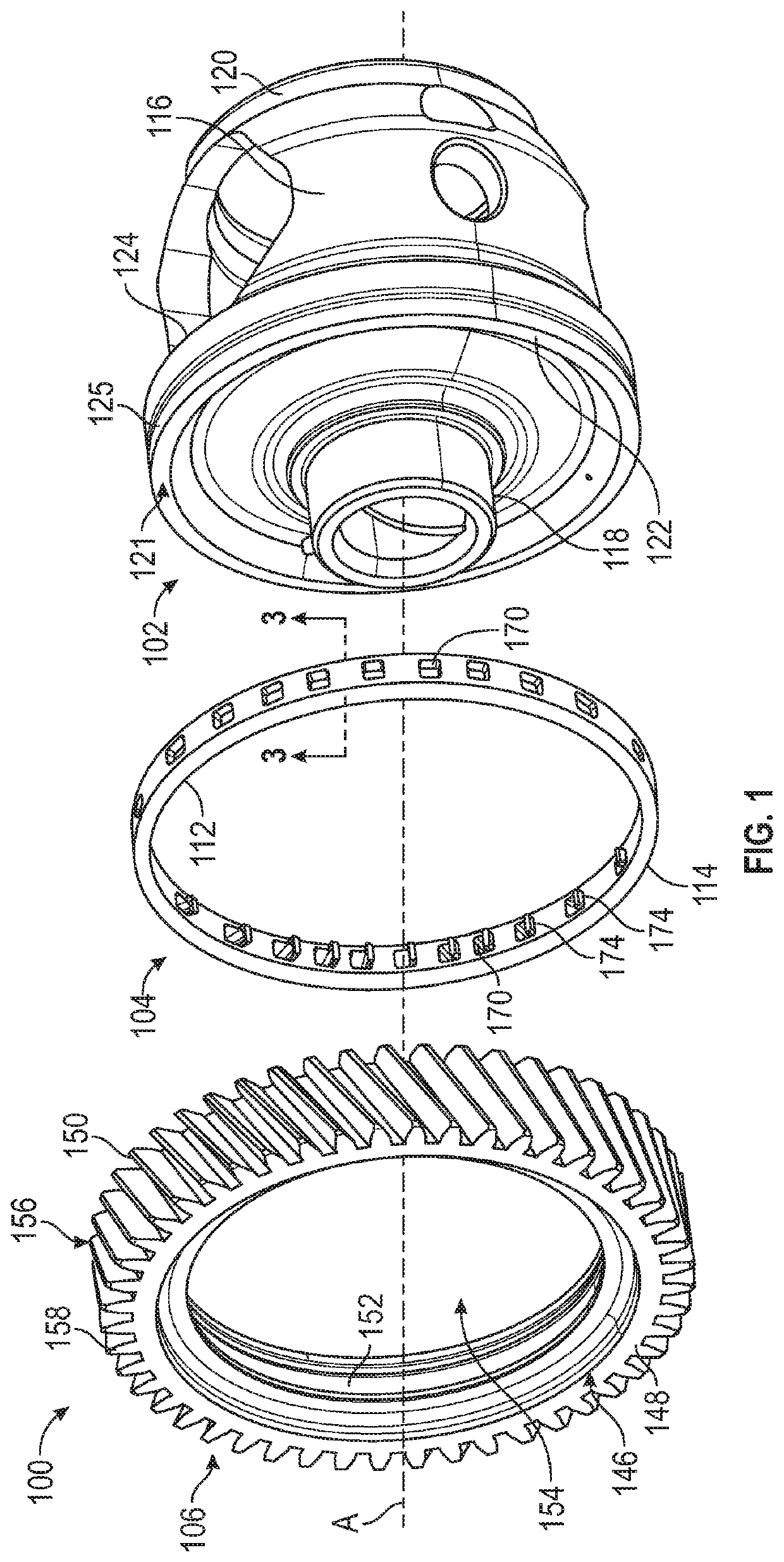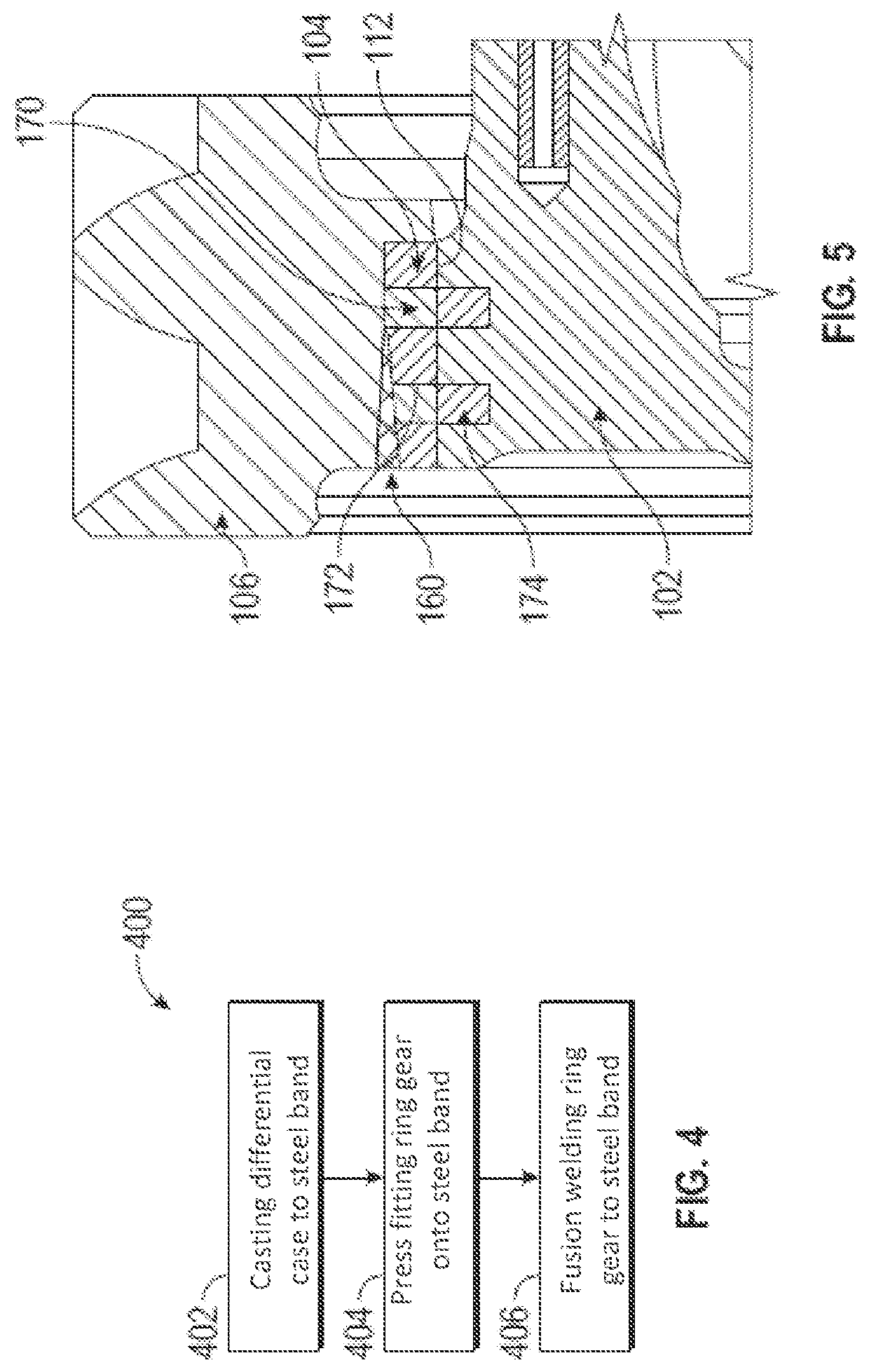Joining of ferrous alloy components by fusion welding using a low carbon steel intermediate element
a technology of low carbon steel and ferrous alloy, applied in the field of fusion welding, can solve the problems of increasing the risk of hard and brittle microstructural phases, reducing the weldability of alloys, and difficult fusion welding of parts
- Summary
- Abstract
- Description
- Claims
- Application Information
AI Technical Summary
Benefits of technology
Problems solved by technology
Method used
Image
Examples
Embodiment Construction
[0029]The following description is merely exemplary in nature and is not intended to limit the present disclosure, application, or uses. The illustrated embodiments are disclosed with reference to the drawings, wherein like numerals indicate like corresponding parts throughout the several drawings. The figures are not necessarily to scale and some features may be exaggerated or minimized to show details of particular features. The specific structural and functional details disclosed are not intended to be interpreted as limiting, but as a representative basis for teaching one skilled in the art as to how to practice the disclosed concepts.
[0030]The present disclosure provides a method of joining a first ferrous alloy component part 102 to a second ferrous alloy component part 106 by fusion welding with a concentrated energy source (e.g., a laser beam, an electron beam, etc.) when at least one of the first and second ferrous alloy component parts 102, 106 is considered unweldable bec...
PUM
 Login to View More
Login to View More Abstract
Description
Claims
Application Information
 Login to View More
Login to View More - R&D
- Intellectual Property
- Life Sciences
- Materials
- Tech Scout
- Unparalleled Data Quality
- Higher Quality Content
- 60% Fewer Hallucinations
Browse by: Latest US Patents, China's latest patents, Technical Efficacy Thesaurus, Application Domain, Technology Topic, Popular Technical Reports.
© 2025 PatSnap. All rights reserved.Legal|Privacy policy|Modern Slavery Act Transparency Statement|Sitemap|About US| Contact US: help@patsnap.com



